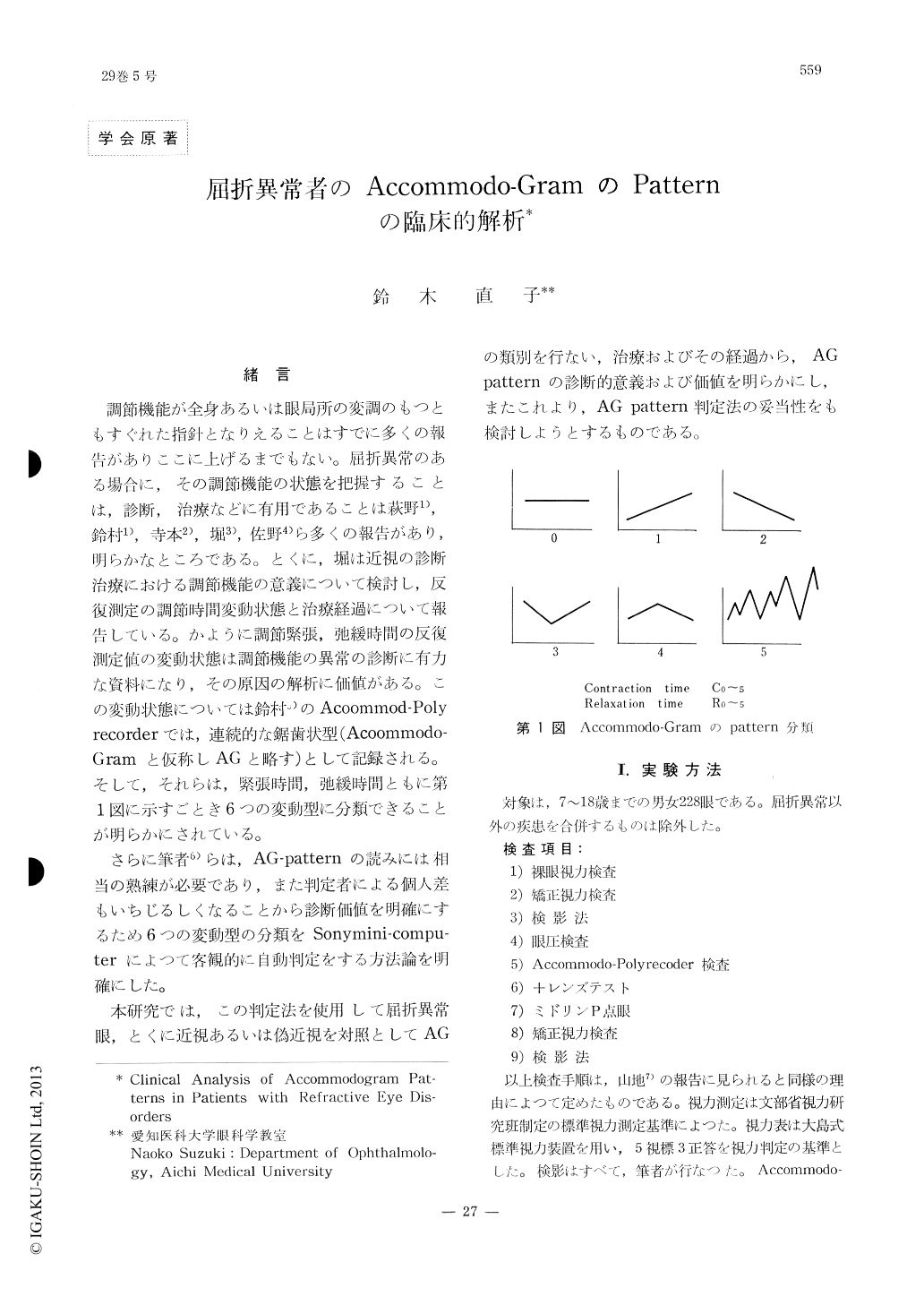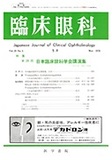Japanese
English
- 有料閲覧
- Abstract 文献概要
- 1ページ目 Look Inside
緒言
調節機能が全身あるいは眼局所の変調のもつともすぐれた指針となりえることはすでに多くの報告がありここに上げるまでもない。屈折異常のある場合に,その調節機能の状態を把握することは,診断,治療などに有用であることは萩野1),鈴村1),寺本2),堀3),佐野4)ら多くの報告があり,明らかなところである。とくに,堀は近視の診断治療における調節機能の意義について検討し,反復測定の調節時間変動状態と治療経過について報告している。かように調節緊張,弛緩時間の反復測定値の変動状態は調節機能の異常の診断に有力な資料になり,その原因の解析に価値がある。この変動状態については鈴村5)のAcoommod-Polyrecorderでは,連続的な鋸歯状型(Acoommodo—Gramと仮称しAGと略す)として記録される。そして,それらは,緊張時間,弛緩時間ともに第1図に示すごとき6つの変動型に分類できることが明らかにされている。
さらに筆者6)らは,AG-patternの読みには相当の熟練が必要であり,また判定者による個人差もいちじるしくなることから診断価値を明確にするため6つの変動型の分類をSonymini-compu—terによつて客観的に自動判定をする方法論を明確にした。
Using an H-S Accommodo-polyrecorder on eyes with refractive disorders and measuring according to Suzumura by mini-computer with repetitive pattern values at times of contraction and relaxation, the contraction time pattern (C-pattern) and relaxation time pattern (R-pat-tern) were classified into six types ranging from 0 to 5.
The following medicaments were administer-ed and the clinical effects were tested : 0.5% tropicamide eyedrops before retiring in combina-tion with 0.1% pilocarpine before arising (M+ P) ; 0.5% tropicamide (My) ; 0.005% neostig-mine (M0) ; and Vitamin B1.

Copyright © 1975, Igaku-Shoin Ltd. All rights reserved.


